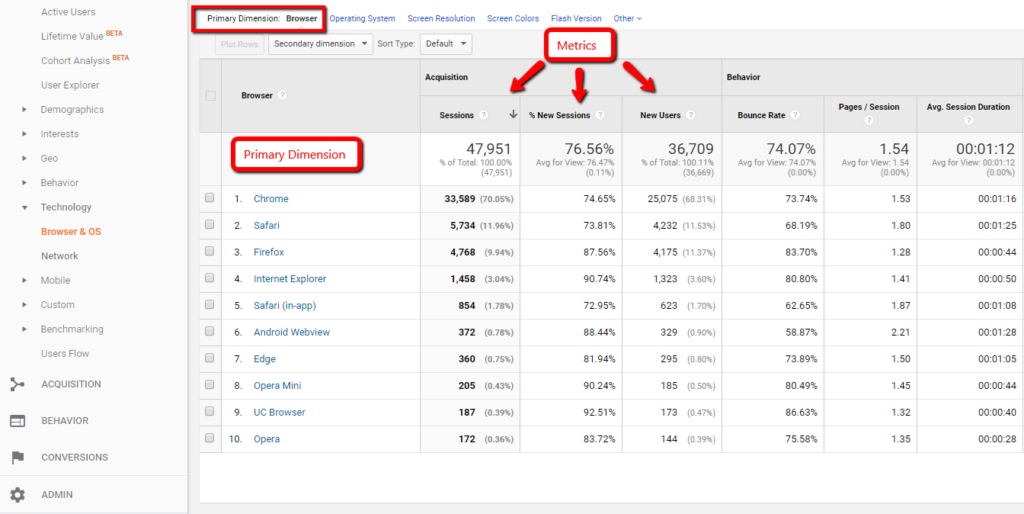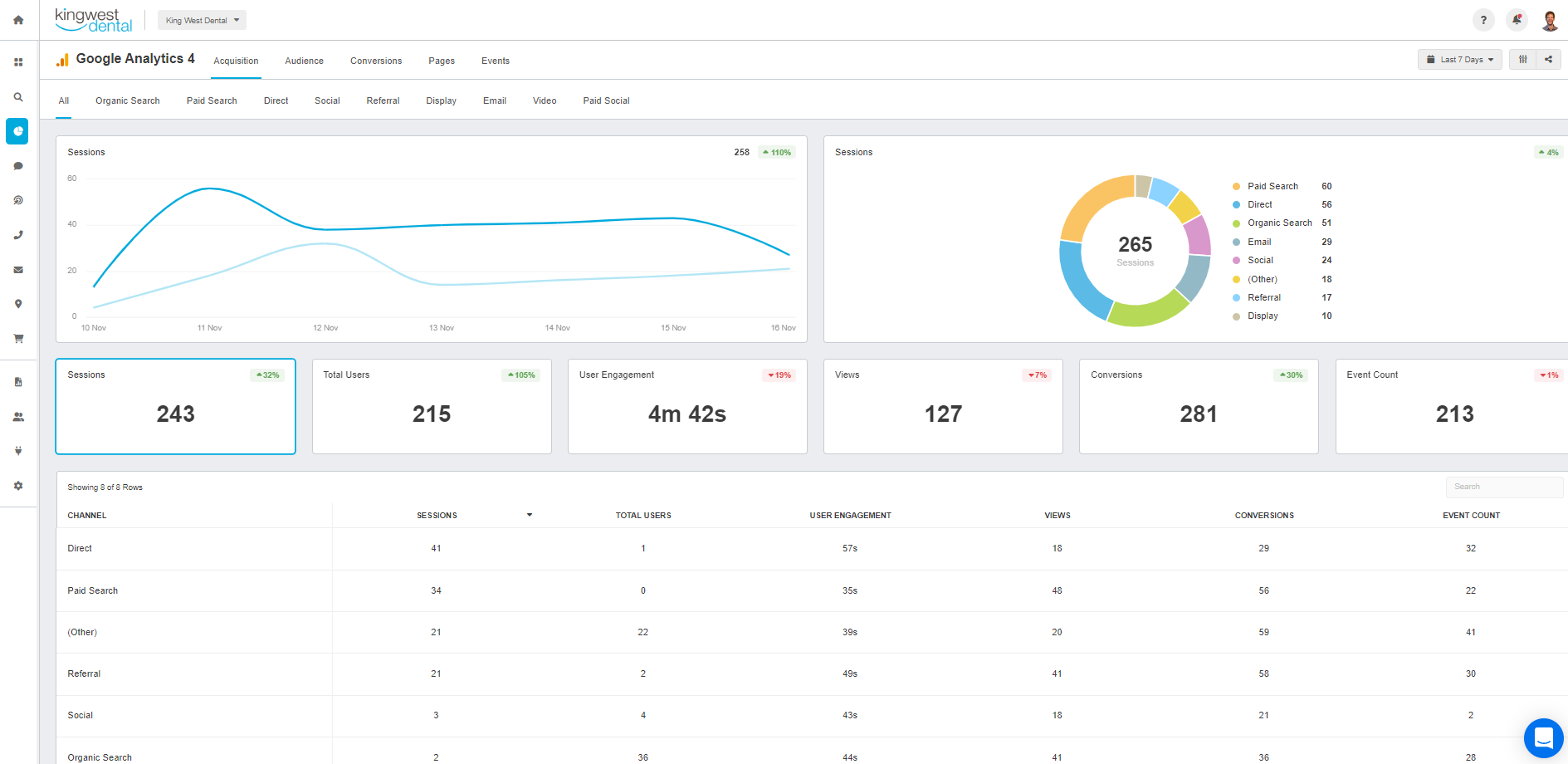Clarified: The Function and Definition of a 'Secondary Dimension' in Google Analytics
Clarified: The Function and Definition of a 'Secondary Dimension' in Google Analytics
Blog Article
Navigating the Midst of Additional Measurement in Google Analytics: A Comprehensive Expedition on Its Functionality
Second measurements, though seemingly simple at initial look, nurture a wide range of untapped prospective waiting to be used. As we begin on this journey to check out the nuanced functionality of secondary measurements, we will uncover how this attribute can light up patterns, reveal correlations, and ultimately pave the method for informed decision-making in the electronic landscape (what is a “secondary dimension” in google analytics?).
Recognizing Additional Measurements in Google Analytics

Understanding how second measurements work is vital for leveraging the full power of Google Analytics. These dimensions aid you respond to much more complex questions concerning customer habits and the efficiency of your web site content and advertising and marketing efforts. As an example, you can utilize additional dimensions to evaluate which browsers or devices are most commonly used by visitors who make an acquisition, or to contrast the bounce prices of various web traffic sources. By incorporating primary metrics with second dimensions, you can gain valuable insights that drive informed decision-making and optimization approaches - what is a “secondary dimension” in google analytics?.
Leveraging Second Dimensions for Data Evaluation
Building upon the foundational understanding of just how second dimensions improve data analysis in Google Analytics, the usage of these additional layers of information becomes vital in extracting important understandings for informed decision-making and optimization methods. By leveraging secondary measurements, experts can delve deeper into the efficiency metrics by including even more context to the primary dimensions, hence discovering surprise patterns and connections that might not appear initially glimpse. This much deeper degree of analysis enables organizations to much better comprehend individual habits, determine patterns, and identify locations for renovation.
In addition, additional measurements offer a more extensive sight of the data, enabling division based on different parameters such as demographics, tools, website traffic sources, and more. This segmentation helps with an extra granular analysis, making it possible for companies to tailor their techniques and campaigns to details audience sectors for enhanced targeting and personalization. In essence, the critical use secondary dimensions encourages companies to make data-driven choices that drive growth and success in the digital landscape.
Advanced Methods for Secondary Dimension Application
Exploring intricate techniques to harness the full potential of second dimensions in Google Analytics boosts the deepness and elegance of information analysis for tactical decision-making. One innovative technique for implementing second dimensions is the use of custom measurements. Furthermore, combining additional dimensions with innovative sectors can provide even a lot more granular insights by using several layers of segmentation to the data.
Interpreting Insights Via Additional Dimensions

When interpreting insights through additional dimensions, it is vital to take into consideration the context of the data and just how various measurements connect with each various other. For instance, understanding which particular web traffic sources result in higher conversion prices or identifying which devices customers favor for making acquisitions can supply actionable insights for maximizing advertising and marketing campaigns and improving overall site performance. By thoroughly examining the data with secondary measurements in mind, organizations can make educated decisions that drive meaningful outcomes and improve their digital visibility.
Enhancing Performance With Second Measurements

One key means to enhance performance with secondary measurements is by segmenting data more granularly. This permits you to isolate details elements that may be influencing your metrics and acquire a better understanding of what drives success or failure in your digital campaigns. By integrating additional measurements such as 'tool category' and 'touchdown web page,' you can identify which tool kinds are most effective for certain landing web pages, allowing you to customize your strategies appropriately.
Additionally, utilizing second dimensions can aid you identify fads, patterns, and relationships that might not appear when evaluating data with main dimensions alone. This deeper degree of evaluation can cause even more educated decision-making and eventually boost the overall efficiency of your internet site or digital advertising campaigns.
Verdict
Finally, second measurements in Google Analytics play a crucial duty in improving information analysis and offering deeper understandings into site performance. By making use of innovative techniques and interpreting the data effectively, companies next can optimize their visit this site methods and enhance overall efficiency. Comprehending the capability of additional measurements is vital for making notified decisions and driving success in the electronic landscape.
By leveraging second dimensions, experts can delve much deeper into the efficiency metrics by including even more context to the primary measurements, therefore revealing hidden patterns and connections that might not be apparent at very first glimpse. One advanced method for implementing additional measurements is the use of customized dimensions.Having understood advanced techniques like customized dimensions and regex for second dimension application in Google Analytics, the following crucial action is interpreting the important understandings acquired via these advanced data segmentation approaches. Analyzing insights with additional measurements involves analyzing the relationships between the key and second measurements chosen, revealing patterns, trends, and connections that may not be instantly apparent when looking at the data in its entirety.When analyzing insights via secondary measurements, it is vital to think about the context of the data and how different measurements interact with each other.
Report this page